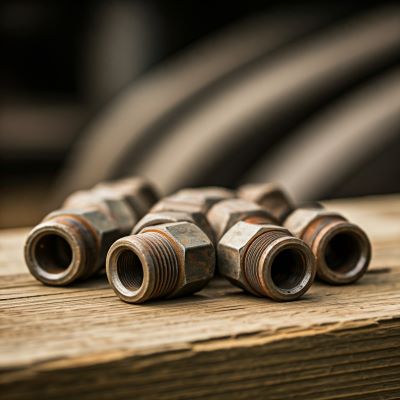Hydraulic systems, with their intricate network of pipes and components, are the backbone of countless industries. From heavy machinery to precision instruments, hydraulic power provides the force and control needed for efficient operation.
Within this complex system, a seemingly simple component, the hydraulic line plug, plays a critical role in ensuring safety, performance, and longevity.
What Are Hydraulic Line Plugs?
Hydraulic line plugs are specialized devices designed to seal the ends of hydraulic lines when they need to be temporarily or permanently closed. They are available in a variety of sizes, forms, and materials, each of which is appropriate for distinct uses.
Types of Hydraulic Line Plugs
➡️ Screw-in Plugs: These are threaded plugs that screw directly into the end of a hydraulic line.
➡️ Snap-in Plugs: These plugs have a tapered design that allows them to be inserted into a hydraulic line and held in place by friction.
➡️ Blind Plugs: These plugs have a flat, solid end that covers the opening of a hydraulic line.
Materials Used in Manufacturing Hydraulic Line Plugs
Hydraulic line plugs are typically made from durable materials like steel, brass, or plastic. The choice of material depends on the specific application, the fluid being used, and the operating conditions.
Common Applications for Hydraulic Line Plugs
➡️ Industrial Machinery and Heavy Equipment: Hydraulic line plugs are essential in maintaining the integrity of hydraulic systems in heavy machinery like excavators, cranes, and bulldozers.
➡️ Automotive and Aerospace Industries: In these industries, hydraulic systems power brakes, steering, and other critical components. Hydraulic line plugs help ensure system reliability and safety.
➡️ Hydraulic Systems in Construction and Agriculture: Hydraulic systems power a wide range of construction and agricultural equipment, from backhoes to tractors. Hydraulic line plugs are crucial for preventing leaks and contamination.
Benefits of Using Hydraulic Line Plugs
➡️ Preventing Leaks and Maintaining Pressure: Hydraulic line plugs help maintain system pressure by preventing leaks.
➡️ Protecting Components from Contamination and Damage: By sealing off unused ports, hydraulic line plugs protect components from dirt, debris, and moisture.
➡️ Extending the Life of Hydraulic Systems: Proper sealing and maintenance with hydraulic line plugs can significantly extend the life of hydraulic systems.
How to Choose the Right Hydraulic Line Plug for Your System
When selecting a hydraulic line plug, consider the following factors:
➡️ Size: Ensure the plug fits the specific size and thread of the hydraulic line.
➡️ Material: Choose a material compatible with the hydraulic fluid and operating conditions.
➡️ System Pressure: The plug must be rated for the maximum system pressure.
Common Mistakes to Avoid:
➡️ Using the Wrong Size Plug: A plug that is too small or too large can lead to leaks or damage to the hydraulic line.
➡️ Ignoring Material Compatibility: Using an incompatible material can cause corrosion or premature failure.
➡️ Overtightening: Overtightening can damage the plug or the hydraulic line.
Step-by-Step Guide to Installing Hydraulic Line Plugs
1. Prepare the Line: Clean the end of the hydraulic line to remove any debris or contaminants.
2. Select the Correct Plug: Choose a plug that matches the size and thread of the line.
3. Insert the Plug: Screw in a screw-in plug or insert a snap-in or blind plug.
4. Tighten (if necessary): For screw-in plugs, tighten them to the manufacturer’s recommended torque.
5. Test for Leaks: Inspect the plug for leaks, especially under pressure.
Maintenance and Care for Hydraulic Line Plugs
➡️ Regular Inspection: Periodically inspect hydraulic line plugs for signs of wear, damage, or leaks.
➡️ Replacement: Replace any damaged or worn-out plugs promptly.
➡️ Proper Storage: Store unused hydraulic line plugs in a clean, dry place to prevent corrosion and damage.
Troubleshooting Hydraulic Line Plug Issues
➡️ Leaks: If a plug is leaking, it may need to be tightened or replaced.
➡️ Fitting Issues: Ensure the plug is the correct size and type for the hydraulic line.
➡️ Contamination: Clean the hydraulic line and plug to remove any contaminants.
Conclusion
Hydraulic line plugs may be small, but they play a vital role in the overall performance and reliability of hydraulic systems. By understanding their function, choosing the right plugs, and following proper installation and maintenance practices, you can help ensure the long-term health of your hydraulic equipment.
Post time: Oct-24-2024


